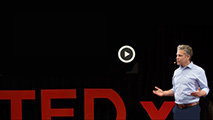When we look carefully at longstanding conflict, we see that both sides are engaged in similar internal processes. First, they are disagreeing about something specific—money, custody of a child, the ability to control a board of directors, something important to each. Still, they would easily come to resolution if not for the next problem.
Second, and most importantly, injury has taken place. They each see the other as having attacked them in some way (furnishing yet more evidence that the other person doesn’t care about their wellbeing). The disagreement has become personal. Once trust has deteriorated, they are too suspicious to work closely to generate mutually satisfying alternatives. Their negative views are then reinforced by their inability to solve the problem. And so they fight. And so they hire lawyers and go to court, spend great sums and intensify the distrust.
This is the trap in which so many find themselves. There is however a way out. Both parties’ impressions of the problem itself will radically change when their experience is understood by the other. In the Through Understanding approach, we look to establish connection between those in dispute. While understanding, once achieved, does not itself resolve the issues, it lays the foundation for productive problem solving. When people can begin again to see the humanity in each other, solutions naturally emerge.
People are most likely to see the logic of this approach to resolving conflict when their relationship will continue beyond the conclusion of the immediate matter, such as in divorces where children are present, or in business conflicts where the founders or principals are family members or friends.
But the benefits go well beyond preserving respect and warmth in a relationship. First, the solutions found normally endure because they are designed by the parties themselves, with deep understanding of their own needs and the needs of the other. Second, the expense is almost always a small fraction of the cost of litigation. Third, and perhaps most important, the process frees people from the devastating consequences of anger and resentment. As we all know, the greatest cost to conflict is that we become consumed. Here we can once again enjoy the beauty that awaits us in life.
To better understand my approach to resolving difficult issues, see my TED talk.
